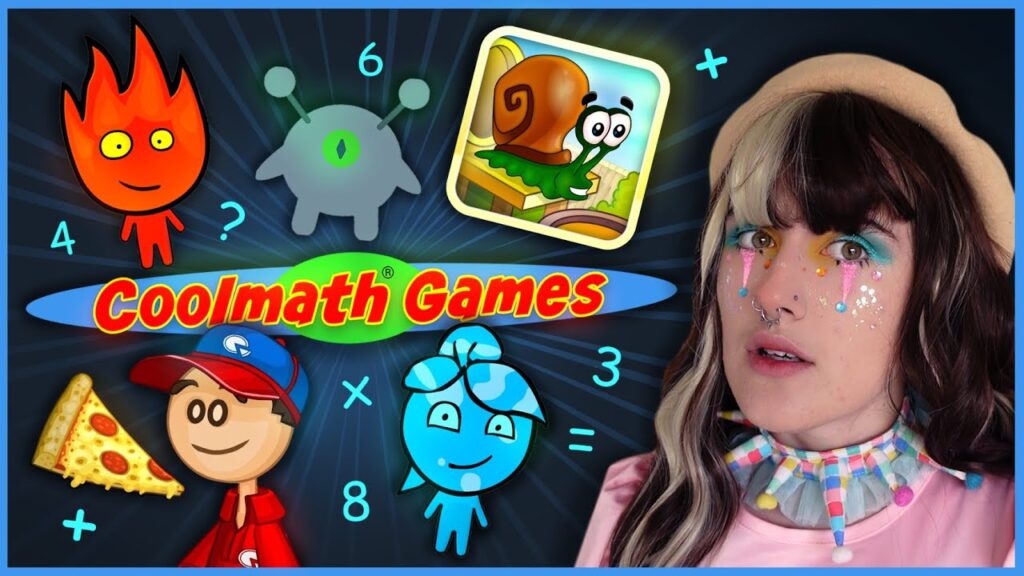Mathematics is a subject that can often be intimidating and challenging for many students. But what if there was a fun and engaging way to unlock your inner math whiz? Enter cool math games – an innovative approach to learning that combines the power of math with the excitement of games.
Understanding the Power of Math Games
Cool Math games have gained popularity in recent years as a way to make learning math more enjoyable. These games offer a unique blend of entertainment and educational value, allowing students to strengthen their math skills while having fun at the same time.
The Connection Between Math and Games
Math and games might seem like two unrelated concepts, but they actually have a strong connection. Games often involve solving puzzles, strategizing, and making calculations – all of which are crucial components of mathematics. By incorporating math into games, students can develop a deeper understanding of mathematical concepts and improve their problem-solving abilities.
For example, imagine a math game where students have to solve equations to unlock different levels or earn points. In order to progress in the game, they must apply their knowledge of algebra and arithmetic to solve the problems. This not only reinforces their understanding of mathematical operations but also encourages them to think critically and develop effective problem-solving strategies.
Furthermore, Cool math games provide a practical application for mathematical concepts. Students can see how math is relevant and useful in real-life scenarios, which can enhance their motivation to learn. For instance, a game that simulates managing a budget or running a business can help students understand the importance of mathematical skills in financial decision-making.
Why Math Games are Effective Learning Tools
There are several reasons why Cool math games are effective learning tools. Firstly, games provide a hands-on approach to learning, allowing students to actively engage with mathematical concepts. This interactive nature helps to reinforce understanding and retention of the subject matter.
When students play Cool math games, they are not just passively absorbing information; they are actively applying mathematical principles, experimenting with different strategies, and making connections between concepts. This active participation promotes a deeper level of learning and helps students develop a solid foundation in math.
Secondly, games tap into the natural human inclination for competition and rewards, motivating students to actively participate and strive for improvement. By incorporating elements such as leaderboards, achievements, and rewards, Cool math games create a sense of excitement and challenge that can inspire students to push themselves further.
Moreover, Cool math games often present concepts in a visually appealing and stimulating manner, making it easier for students to grasp complex ideas. By using colorful graphics, interactive animations, and engaging storylines, games can capture students’ attention and make learning math more enjoyable.
Imagine a math game set in a virtual world where students have to solve math problems to unlock new areas or discover hidden treasures. The immersive and visually rich environment not only makes the learning experience more engaging but also helps students visualize abstract concepts and make connections between different mathematical ideas.
By presenting math in a fun and engaging way, games can help alleviate the anxiety and stress that sometimes comes with learning this challenging subject. Students may feel more motivated to practice and explore math when it is presented as an enjoyable activity rather than a tedious chore.
In conclusion, Cool math games offer a powerful tool for enhancing math education. They provide an interactive and engaging learning experience that promotes deeper understanding, problem-solving skills, and motivation. By incorporating math into games, educators can tap into students’ natural curiosity and love for play, making math a subject that is not only educational but also enjoyable.
Exploring Different Types of Math Games
Math games come in various forms, catering to different learning styles and age groups. Let’s take a closer look at a few popular types:
Puzzle-Based Math Games

Puzzle-based math games challenge students to solve mathematical puzzles or riddles. These games require critical thinking skills and encourage students to think outside the box. They often involve logical reasoning, spatial visualization, and pattern recognition – all of which are essential skills in mathematics.
One example of a puzzle-based math game is Sudoku. In this game, players must fill in a grid with numbers, making sure that each row, column, and box contains all the numbers from 1 to 9 without repetition. Sudoku puzzles can be found in various difficulty levels, allowing players of different ages and abilities to enjoy the challenge.
Another popular puzzle-based math game is Tangrams. Tangrams consist of seven geometric shapes that can be rearranged to form different figures. Players must use their spatial reasoning skills to manipulate the shapes and recreate the given figure. This game not only enhances problem-solving abilities but also helps develop an understanding of geometric concepts.
Strategy Math Games
Strategy Cool math games focus on problem-solving and decision-making. These games require players to make strategic choices and employ mathematical reasoning to achieve their objectives. They help develop analytical thinking, logical deduction, and strategic planning skills – all valuable abilities both inside and outside of the math classroom.
One example of a strategy math game is Set. In this game, players must identify sets of three cards that either share the same or different attributes in four categories: shape, color, number, and shading. By analyzing the cards and applying logical reasoning, players can determine which cards form a set. Set is a fast-paced game that challenges players to think quickly and make strategic decisions under pressure.
Another popular strategy math game is Nim. Nim is a mathematical game of strategy in which two players take turns removing objects from distinct piles. The goal is to force the opponent to take the last object. Nim requires players to analyze the number of objects in each pile and devise a winning strategy based on mathematical principles.
Math Games for Different Age Groups
Math games can be designed for various age groups, from preschoolers to high school students. Younger children might engage in counting games or simple addition and subtraction challenges, while older students can enjoy more advanced games involving algebra, geometry, or calculus. The versatility of math games ensures that there is something for everyone, regardless of their mathematical proficiency.
For preschoolers, math games can involve activities such as counting objects, identifying shapes, or sorting and classifying items based on different attributes. These games lay the foundation for basic numeracy skills and help children develop a strong number sense.
As children progress to elementary school, math games can become more complex. They can involve concepts such as multiplication, division, fractions, and decimals. These games provide opportunities for students to practice and reinforce their mathematical skills in a fun and engaging way.
For middle and high school students, math games can delve into more advanced topics. They can involve algebraic equations, geometric proofs, trigonometric functions, or calculus concepts. These games not only reinforce mathematical concepts but also challenge students to apply their knowledge in real-world scenarios.
Overall, math games offer a dynamic and interactive approach to learning mathematics. They not only make the subject more enjoyable but also help develop critical thinking, problem-solving, and analytical skills – all of which are essential for success in the field of mathematics and beyond.
Benefits of Incorporating Math Games into Learning
Integrating math games into the learning experience can have several benefits for students:
Enhancing Problem-Solving Skills
Math games provide an excellent platform for students to develop and refine their problem-solving skills. These games often present challenges that require students to think critically and apply their mathematical knowledge to find solutions. By practicing problem-solving in a game-based context, students can improve their ability to tackle math problems in real-life situations.
Boosting Memory and Cognitive Skills
Playing math games regularly can enhance memory and cognitive skills. These games require players to remember rules, formulas, and patterns, which helps strengthen memory retention. Additionally, the strategic thinking and logical reasoning involved in math games can improve cognitive abilities such as attention, concentration, and analytical thinking.
Making Math Fun and Engaging
One of the primary benefits of incorporating math games into learning is that they make math fun and engaging! Traditional math learning methods can often feel dull and monotonous, leading to disinterest and lack of motivation. By introducing games, educators can create a lively and interactive environment that sparks students’ enthusiasm for math, ultimately fostering a positive attitude towards the subject.
Tips for Choosing the Right Math Game
When selecting a math game, it’s essential to consider a few factors to ensure it aligns with the learning goals and needs of the students:
Considering the Difficulty Level

Choose a math game that matches the proficiency level of the students. It should provide an appropriate challenge without being too overwhelming or too easy. Progressive difficulty levels can also be beneficial as they allow students to gradually build their skills and knowledge.
Checking the Game’s Educational Value
While fun is important, make sure the math game offers educational value. Look for games that align with the relevant curriculum and provide opportunities for practicing specific math skills. Reading reviews and seeking recommendations from educators can help ensure the game meets the desired educational standards.
Ensuring the Game is Age-Appropriate
Consider the age range of the students for whom the game is intended. Different age groups have varying levels of mathematical understanding and cognitive abilities. Select a game that is developmentally appropriate and aligns with the targeted age group’s learning objectives.
Unleash Your Inner Math Whiz Today!
Math games have the power to transform the way we learn and perceive mathematics. By harnessing the excitement and engagement of games, students can unleash their inner math whiz and develop a lifelong love for numbers. Whether it’s through puzzle-based games or strategic challenges, math games provide a dynamic and enjoyable avenue for mastering math skills. So, why not embark on your math learning journey today with cool math games?




